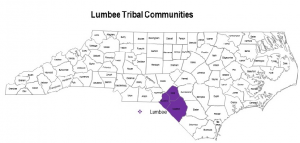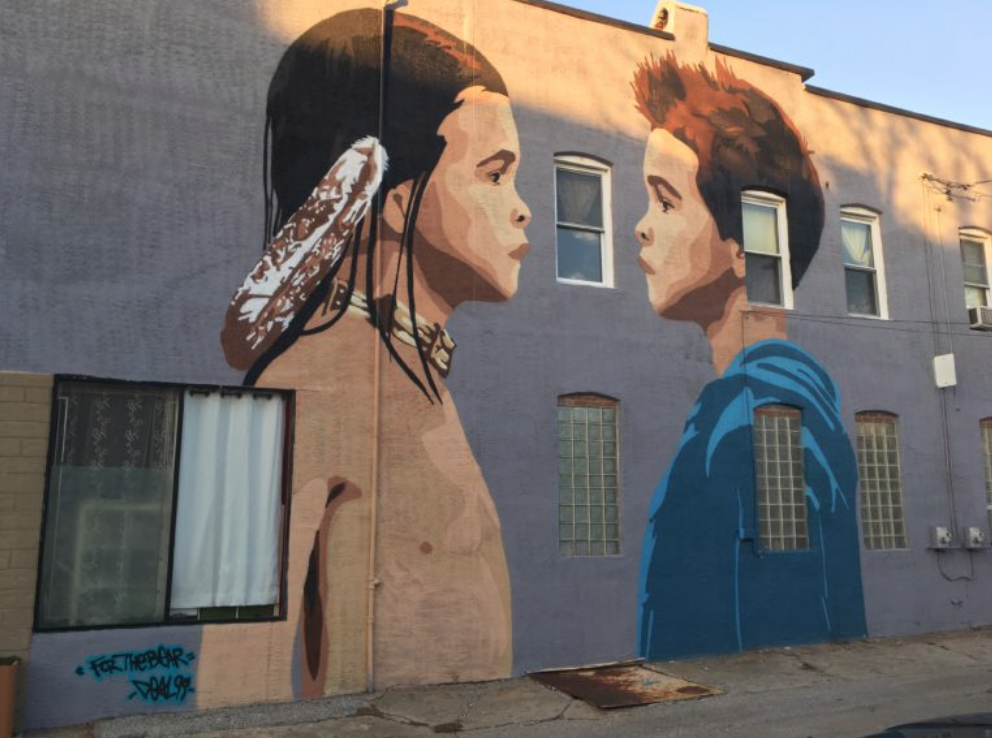Intro: For my digital history project, I wanted to pick something that is both realistic and beneficial to my academic progress here at Temple. This being said, I want to create a project that I can start now and realistically complete by April 2020. My masters thesis will be focusing on the multitude of Lumbee families and individuals who migrated from Robeson and surrounding counties in North Carolina to northern urban centers, specifically Philadelphia, following the Second World War. While Philadelphia was a popular destination for these migrants, there is a lack of scholarship on Lumbee experiences in Philadelphia. Lumbee communities in North Carolina are clearly defined, despite the lack of visible and mapped boundaries. Likewise, Lumbee identity is clearly defined through kinship relations, often easily distinguishable by surname. Oftentimes, when two Lumbees meet for the first time, the first question usually asked is, “Who’s your people, where do you stay?” The answers to these questions establish a common Indian identity, relation, and even trust through kinship and place. Malinda Maynor Lowery writes in her book The Lumbee Indians: An American Struggle, “To be “from” one of these communities often, though not always, means that one’s family has lived there, on or very near the same piece of land, for at least a century. Over time, people from towns and cities such as Pembroke, Lumberton, or even Baltimore have thought of themselves the same way, as indelibly attached to those places, even though they are different from their ancestors’ original places.” My research seeks to understand Lumbee identity for the following groups of people.
- Lumbee who migrated to urban centers and stayed/plan to stay in urban centers.
- Lumbee who migrated to urban centers and returned to Indian communities in North Carolina
- Lumbee who’s children grew up in and remained in urban centers
- Lumbee who’s children grew up in urban centers and returned to Indian communities in North Carolina

Lumbee “territory” in North Carolina
Before I delve deep into research, it will be helpful for me to find as many people who fit into these groups as possible. Though I already have some connections in different areas, I think a crowdsourced mapping project would be a great way to expand my network while allowing people to share their own experiences and connect with others. For my digital history project, I propose to set up a site in which people can share their experiences being Lumbee in various places through points on a map. I would love for people to be able to drop pins on locations that have had defining impacts on their Indian identity, whether it be in an Indian community, an urban space, abroad, or really anywhere. I envision people being able to mark multiple locations, to share photographs if desired, and to be able to network with other individuals who may have similar experiences in various places.
Challenges: The idea of “mapping” Lumbee experience is a challenging concept considering how complex of a relationship Lumbee identity and place can be. To quote Malinda Maynor Lowery again, “Lumbees talk about place from the bottom up, driven by relationships and stories, rather than from the top down. The Lumbee homeland is best imagined in many layers, as something to be remembered and felt, rather than as a map of places that can only be seen. Locations on a map – a town, a school, a homestead, a road, a swamp, a river-are just the beginning of what Lumbees mean when they talk about place.” This being said, I don’t want to restrict or limit individuals by allowing them to only map one place. Instead, I propose that they should be encouraged to map any place they feel has made a significant impact on their identity, whether it was questioned, challenged, or strengthened. I also take the idea of shared authority seriously when thinking about public history and I think crowdsourcing can be a productive way to do this. However, entries will have to be monitored to ensure that the site is not being used for malicious purposes.
Related Research Questions: The completion of this project has the potential to address several related research questions. Along with the following outlined questions, I hope that this project will spark many new research questions as well.
- What is the relationship between Lumbee identity and place?
- Where have Lumbee people migrated to?
- How does moving away impact Lumbee identity?
- Does moving away strengthen or break down Lumbee identity?
- How do Lumbees deal with living in areas where their identity is largely unknown?
- Are there pockets of Lumbee communities living outside of Lumbee territory? If so, where can they be seen?
Tools Needed: In order to complete this project, I will need to identify a way to do crowdsourced mapping. I am not really familiar with all of the options for doing this as far as programs go, but it will need to be free yet somewhat customizable.
Data and End Goals: Overall, it is my goal that this project will provide a visual representation of the data it collects. The data will be generated by the people themselves. I hope through a crowdsourcing website, I can create a form that will require participants to enter essential information, such as location, date, and a brief statement about their experiences in that place. I don’t plan on restricting participants to only Lumbees who have moved away from Indian communities. I think it is important for those who have chosen to remain in their communities to have an opportunity to map their experiences as well. I also don’t plan on restricting entries based on date either. This being said, I hope it will be possible to filter through the data to make it as closely fitting with my research as possible. I plan on using the data for my own research and as a launching pad for finding candidate to interview further.
Regardless of the project’s outcome, I hope this project will get Lumbee people excited about sharing their experiences with place. I hope it encourages people to be open about their identity, regardless of location. I also hope this project will connect individuals who don’t know each other, but may live in close proximity to one another. I also think that it will be beneficial and encouraging to read about people with similar experiences, a way of knowing that other people have gone through similar challenges.
Historiographical Context: In general, the concept of Lumbee identity and place has been explored by a number of historians. The history of Lumbee migrations out of Indian communities has also been examined to some extent. Dr. Abraham Makofsky conducted a lot of research on the Lumbee community located in Baltimore, MD. Malinda Maynor Lowery examines Lumbee identity very closely in her books, Lumbee Indians in the Jim Crow South: Race, Identity, and the Making of a Nation and The Lumbee Indians: An American Struggle. In addition, Ashley Minner, an artist and doctoral candidate at University of Maryland College Park does a lot of work with the history of the Lumbee community in Baltimore. As far as the historiographical context within Digital History, this project is similar to a number of mapping projects we have looked at and is also reflective of the metaphorical idea of decolonizing the digital humanities.
